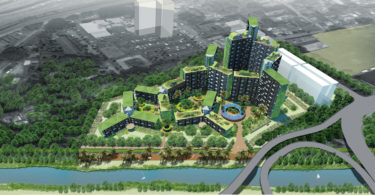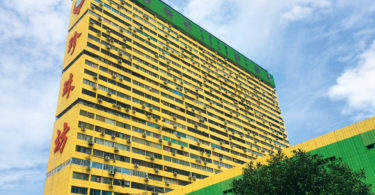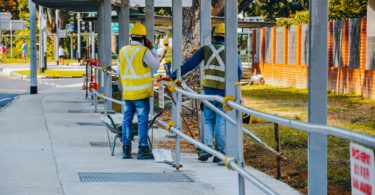Heading home at the end of the day? Chances are you will pull up the Waze or Google Maps app to check for peak hour traffic to either find the best route or the best time to leave. This seemingly trivial convenience today was impossible just 20 years ago. At the centre of this ability to zoom up to 30,000 feet to observe the state of the city is the availability of one key ingredient: Big data.
Sure, data had always been available prior to the 21st century, but what really changed at the turn of the millennium was the speed by which we collect and process these data points. Previously, hundreds of hours would have been spent on station counters and surveyors at key junctions, counting vehicles and conducting Level of Service surveys, for traffic studies. Today, your smartphone transmits these data points to a central core for processing and, in turn, shapes traffic in real time.
Big data has transformed the way we travel in our cities. Government and private sectors around the world are also beginning to use data mapping, modelling and analytics to gain more insights into human behaviour and preferences and make better decisions in planning and management. At the 25th MSC Malaysia Implementation Council Meeting (ICM) in 2013, the Malaysian government announced a Big Data Analytics (BDA) roadmap to unlock the value of its open big data with a pilot project targeting four segments—price monitoring, sentiment analysis, crime prevention and infectious disease forecasting.
Now, imagine the same concepts being used in urban planning, and you can easily understand why big data will change the way we build our cities.
 REACTIONARY VS PROACTIVITY
REACTIONARY VS PROACTIVITY
Why should the construction and development industry pay more attention to big data?
Construction, being a brick and mortar industry, and traditionally a business with a higher barrier of entry than most, has always taken the time dimension for granted. While many developers and builders take the mantra ‘location, location, location’ to heart, some tycoons have quietly attributed ‘timing’ as a key ingredient to their success.
But today, I believe that the concepts of location and time as the drivers are secondary. Instead, data, and the ability to collect and process large amounts of them, are what make or break a development.
Have the perfect location and the right economic conditions for your development? Simultaneous launches by 10 other developers with the same product might derail your sales.
A classic example of this is in Mont Kiara. From the year 2005 to 2010, the expatriate family rental investment proposition resulted in a rush from developers to supply large 2,000-square-foot residential units in the neighbourhood. As a result, this product segment experienced an oversupply, and sales slowed dramatically.
Subsequently, between 2010 and 2015, most developers then shrank their product offering to under 1,000 square feet; this, again, resulted in a surge in supply in that segment. This oscillating ‘trend’ suggests that the property market is reactionary and that products might not be offered based on the fundamental collective supply and demand of the neighbourhood. In the absence of big data, key stakeholders are at risk of acting in accidental concert, resulting in a lose-lose situation for all.
If, however, big data is collected automatically to allow all stakeholders a clearer picture of the supply and demand in the microneighbourhood, authorities would be able to preempt an oversupply condition and avoid the economic inefficiencies of overhang in the market.

COLLECTING AND INTERPRETING URBAN DATA
The challenge of collecting data for the case of traffic was revolutionised with the availability of the smartphone to the masses. That is why the convenience of traffic data is still not yet available in some developing countries. In the case of city planning, the burden of data collection has always been tasked to the government. So, the question, then, is which government?
Kuala Lumpur residents have been using the term Greater KL to describe the Kuala Lumpur urbanised footprint for about a decade or so, but in fact Greater KL as an urban governance concept does not actually exist. Greater KL is governed, instead, by 10 councils across two states. In addition, various centralised urban amenities are under the jurisdiction of federal government agencies or, at times, private companies. So, who really is collecting all our urban data?
Even if the government bodies can consolidate their information systems, their data only paint a limited segment of the city’s mural. What about the lifestyle elements of the city? The economic pulse of the city shaped by its commerce?
With the computing power today, we can now combine, harvest and calculate data points at unprecedented speed. The challenge remains in filtering and ‘humanising’ the data, so that it is understandable and relatable to everyone.
By examining maps and property prices in relation to surrounding infrastructure, such as shopping malls, cemeteries and even local lottery centres, in, say, Greater KL, you can track the behaviour and preferences of residents and make your development decisions accordingly.
For example, did you know that homes located 500 metres from a park command the same price premium as those close to a shopping mall? If that is the case, developers might want to consider building a park instead of a more capital-intensive shopping mall as a catalyst for their development.

Another interesting observation from analysing big data is that common planning assumptions worldwide do not necessarily apply here. For example, in Kyoto, Japan, properties located in proximity to points of interests are usually in demand and command a premium pricing. However, Kuala Lumpur has a stronger ‘not in my backyard’ syndrome than most global cities, and people tend to avoid living near points of interests, mainly due to indiscriminate parking.
Our research data shows that homes located within 500 metres of a hospital or university usually command 2 to 3 percent lower price per square foot than those farther away. Even though people agree that hospitals and universities are helpful and needful, they do not want one in their neighbourhood because that would mean having cars parked all around their housing area instead of the designated parking spots. This shows that good planning needs to go hand in hand with stricter enforcement.
DO YOUR HOMEWORK
Developers and builders are some of the key stakeholders who shape Kuala Lumpur. Every construction project, no matter how small it is, will send a ripple to the market. And unlike the financial markets, what protrudes from our city’s grounds has significantly more permanent effect on the liveability and sustainability of the city, and, hence, warrants to be tracked and monitored more closely.
With the computing powers available today, it is time that we harvest the full potential of big data through auto data gathering and artificial intelligence processing capabilities to monitor our markets.
Just as you would not fail to check your Waze before leaving the office, I believe planners and builders should not fail to do proper and in-depth due diligence and research by harnessing the full potential of big data before building, or risk implementing the ‘wrong strategy’ in your next development.
 CHA-LY KOH
CHA-LY KOH
Trained in city planning at the Massachusetts Institute of Technology (MIT), Cambridge, US, Cha-Ly Koh hopes to harvest intelligence from big data to help governments, city planners, corporations and urban dwellers to shape better global cities.
Koh is the CEO of Propertypricetag.com, an information technology portal that cleans and analyses large amounts of city data through its proprietary algorithms, to extract trends and patterns in the built environment. Propertypricetag.com offers this data to the general public, as well as the public and private sectors, in hopes of creating a more efficient and transparent property market, improving city planning, and shaping a sustainable urban environment.
She recently published a coffee-table book, The Secret Atlas of Greater Kuala Lumpur, in collaboration with Think City, to illustrate how data can help one understand the city better, spot business trends, predict property prices and track user behaviour.

 Hong Kong
Hong Kong Singapore
Singapore Indonesia
Indonesia Tiếng Việt
Tiếng Việt ประเทศไทย
ประเทศไทย









